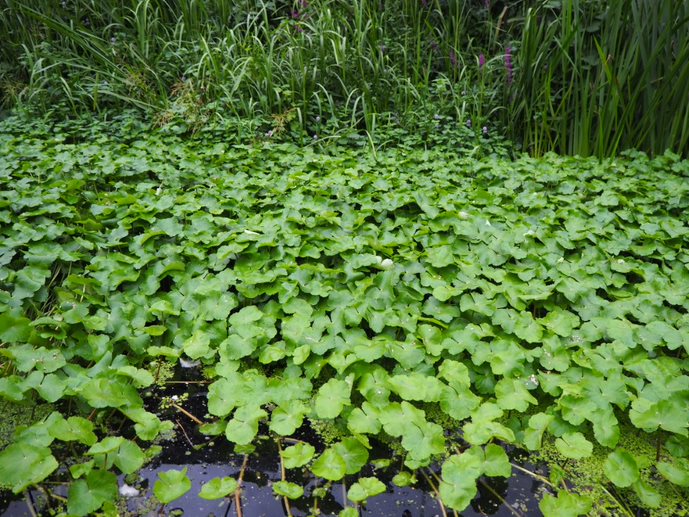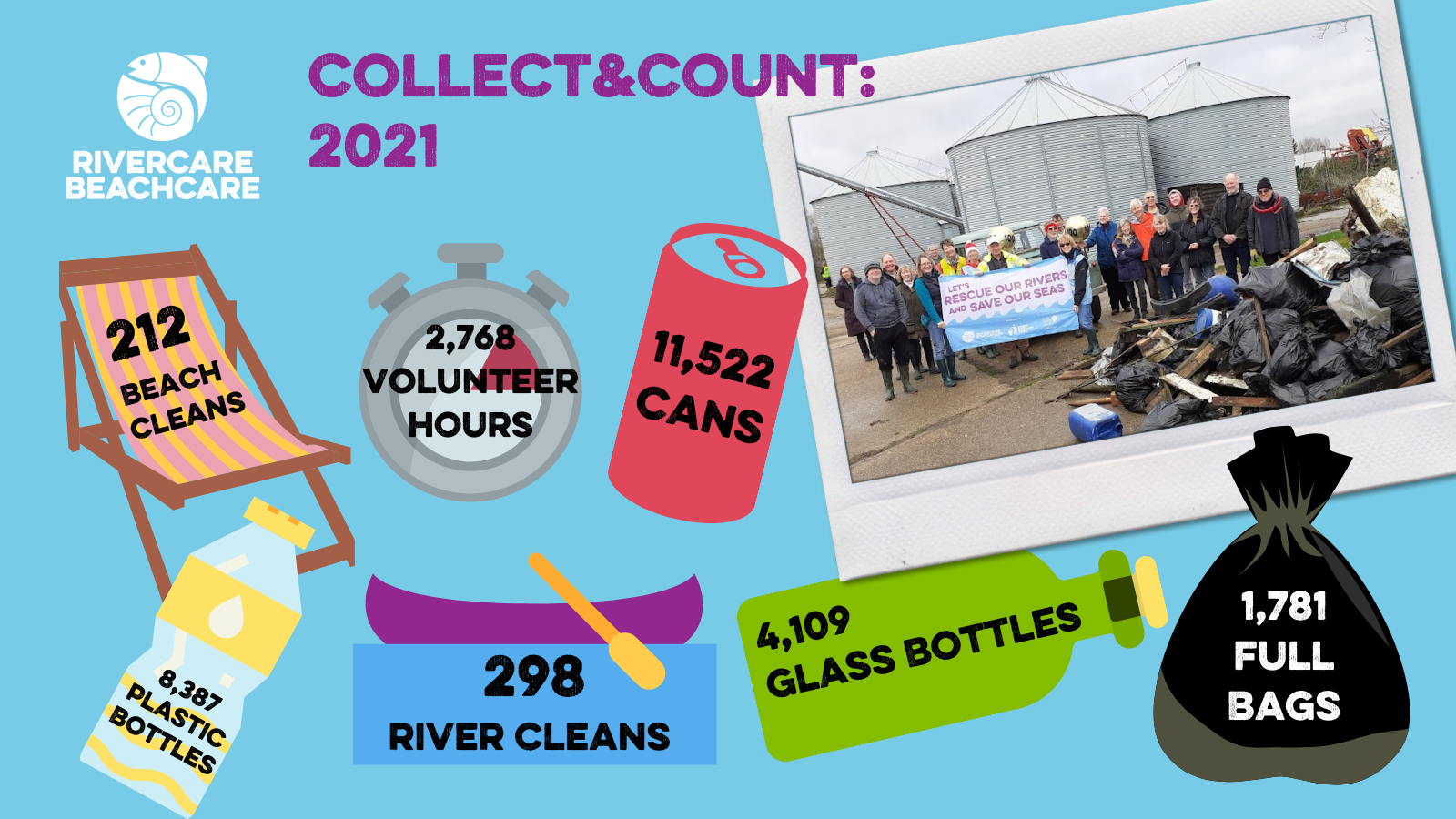
Pennywort Alert
Floating pennywort (Hydrocotyle ranunculoides) has spread rapidly into UK waterways since it was introduced into this country from America in the 1980s as an ornamental garden pond plant - and it can grow at astonishing rates of up to 20cm a day in late summer.
We need to do all we can to halt its spread - but to do that we need the public to be on the lookout.
That's why Keep Britain Tidy's RiverCare&BeachCare team and volunteer groups are currently working in partnership with the Environment Agency and Anglian Water on the Pennywort Alert project, which aims to tackle - and raise awareness of - the damaging invasive species on local waterways.
Members of the public in the Anglian Water region are being encouraged to report sightings of floating pennywort to the RiverCare Facebook page at https://www.facebook.com/RiverCare - outside of this area please contact the Environment Agency or Canal and River Trust.
What does it look like?

- Dense mats of shiny kidney-shaped leaves on the water’s surface
- Leaves that can either be floating or emergent
- Fleshy stalks
- Fine roots
- Horizontal growth
- Leaves are usually broader than they are long
- See more details in our special video here
Why is it harmful?

- Damage to our environment caused by floating pennywort is well documented, as is the knock-on effect to the communities of people who live near, and enjoy, our waterways for recreation.
- Grows up to 20cm a day
- Depletes oxygen levels
- Blocking out vital sunlight for our native aquatic plants, threatening fish, invertebrates, insects and our wider native ecosystems.
- Stops angling, water sports and river and canal navigation and often clogs up boat propellers.
- Blocks key river infrastructure, including weirs, sluices and pumps, which can lead to flooding.
- Costs millions to public and private organisations in terms of requiring physical removal from the water with machinery
- Floating pennywort has been banned from sale since 2014 in the UK and it is now against the law to cause floating pennywort to grow in the wild, but despite this, it is continuing to spread rapidly. It forms dense mats of kidney-shaped leaves on the water’s surface, depleting oxygen levels, blocking out vital sunlight for our native aquatic plants and, ultimately, threatening fish, invertebrates, insects and our wider native ecosystems
What are we doing?

RiverCare&BeachCare, which supports volunteers across East Anglia to care for their local waterways, has been awarded funding to establish the Pennywort Alert project.
The scheme aims to raise the public's awareness of the appearance of the weed, from walkers and paddlers to boaters or anglers, to give them the knowledge and confidence to report sightings so that growths can be dealt with. It will see information shared about how waterway users can take steps to minimise the spread, such as by cleaning loose weeds off their kayaks or canoes.
It also sees armies of Keep Britain Tidy's RiverCare volunteers groups taking to their waterways to support the work of bigger organisations, such as the Environment Agency, by spotting new areas and removing regrowth.
You can support the cause by reading our guide to pennywort so that you know what it looks like and how to report sightings. You can also use the #PennywortAlert hashtag on social media to drive awareness of its appearance and the steps people should take if they spot it.
How can I report it?

- In the Anglian Water region report sightings to the RiverCare Facebook page at https://www.facebook.com/RiverCare
- Outside of this area please contact the Environment Agency’s 24/7 hotline: 0800 80 70 60 (or Canal and River Trust if on a CRT waterway)

Read our #PennywortAlert guide

You can read more about floating pennywort in our special guide here.




